Wildlife guide to the woodland animals of the UK
Camping in a forest is the perfect way to really learn about woodland animals and wildlife in the UK.
Because a lot of the creatures who live in the forest are pretty elusive, many people wouldn’t guess the rich diversity of species that live in our forests.
Being able to spot woodland wildlife a great activity for family walks through the forest and a fantastic skill to pass down to kids.
It is so exciting to spot a glimpse of a deer through the trees, or an otter dipping its head underwater.
Remember, a lot of species are decreasing in number or even endangered due to disruption to food chains, habitat damage and climate change, so it is vital to respect their habitats when you’re visiting a forest.
Badgers
Mammals in the forest are often hard to spot, as they are afraid of humans, however they are always worth looking out if you walk quietly and look carefully. Badgers are one of the most distinctive animals in the forest, with their black and white striped face.
They are actually the biggest land based predator in the UK and most of a badgers diet is made up of earthworms, which they eat at night. Badgers are nocturnal, making them difficult to spot, although sometimes they emerge just before sunset on long summer evenings.

One of the best ways to try and spot badgers is to find one of their dens, which are called setts. These are holes in the ground, which lead to underground burrows, and you can tell from the outside whether the sett is in use by checking if the hole has smooth sides from frequent use. Bedding materials and freshly dug soil just outside the hole is another tell-tale sign the set is active.
Simon King is a supporter of Badger Watch Dorset if you live or are travelling in this area. Booking is essential though!
Foxes
If you live in the city, you’ll have most likely seen a fox before, in fact they are often easier to spot in the city as urban foxes are more accustomed to, and have little to fear from human presence. In both the forest and city, foxes are most active around dawn and dusk.
They will eat almost anything, from rodents and rabbits to fruit, berries, beetles and even deer fawns.
Interestingly, foxes have a complex relationship with badgers, often competing for food but they have also been observed living alongside one another in badger setts.
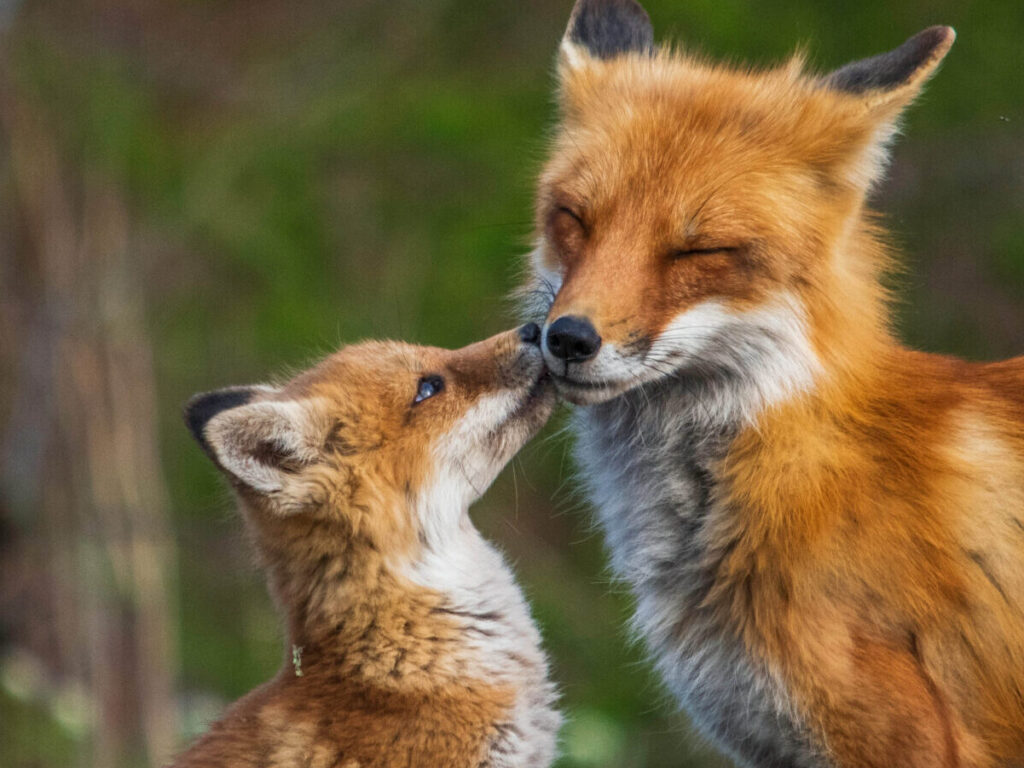
Deer
There are a few different deer species that you can spot in a UK forest.
One of the most common is the fallow deer, which has a chestnut brown coat speckled with white dots. The males have distinctive palmate antlers that are shed and regrown yearly, and fallow deer have a white rump with a black horseshoe outline. Fallow deer are actually not native to the UK- they were introduced 1000 years ago by the Normans.
You can also spot muntjac deer, which were introduced to the UK in the 20th c. these are small deer with red brown fur and a cream stomach. The males have short antlers which grow backwards.
If you’re lucky you’ll glimpse the majestic red deer (shown below), the largest land mammal in the UK, with some males standing four feet tall. Males also have a large set of antlers that grow with age, some reaching to 16 branches.
Roe deer are another UK deer species, characterised by small antlers which are shed and regrown each year. Roe deer also have bright red brown fur in summer, which fades to a dull brown in winter.

Sika deer were introduced to the UK in 1860, and while these grumpy looking animals have increased in number in the UK, they have actually become extinct in some areas of their native range.
They can easily be confused with fallow deer in summer, but whilst fallow deer have long tails with a black stripe running down its length, sika tails are shorter and all white. Sika deer also have pointed antlers rather than broad flattened ones.
Deer have no natural predator, but one of the things that does threaten them is car accidents, especially on country roads when drivers often drive extremely fast. Be especially aware when driving in May, October and November as these are when accidents with deer are highest. If you’d like to find out more about what you can do as a visitor to prevent harm to the countryside, check out The countryside code.
Voles
Voles have small eyes, a rounded snout and a short tail- and are in my opinion one of the cutest animals in the forest!
Bank voles have large ears, and can sometimes be confused with mice which have even larger ears and long hairless tails.
Voles sometimes hunt small insects but mostly eat vegetation, fruits and nuts. Bank voles are often confused with field voles- but the key way to tell the two apart is to look at their tails.
A field vole’s tail is around a third of the size of its head and body, whilst a bank vole’s is around half the size of its head and body. Although field voles are rarely seen, they are actually one of the UK forest’s most common mammals.
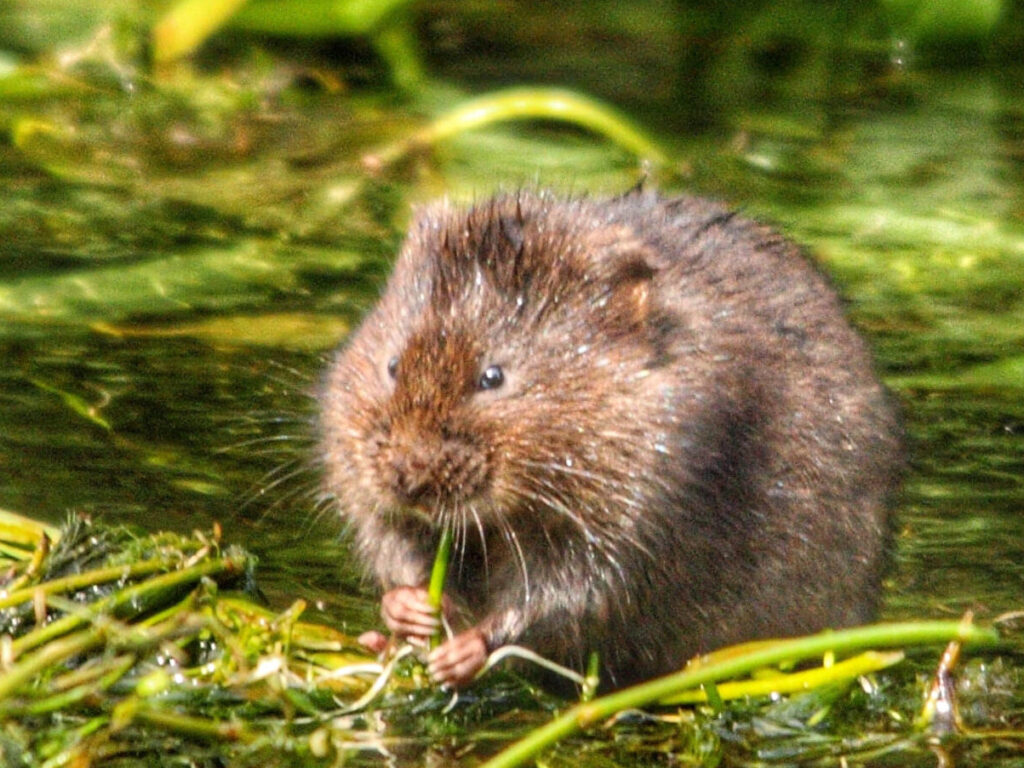
Squirrels
Grey squirrels are native to north America and were introduced to the UK in the 19th c. The size of their populations has grown quickly, and they have had a disastrous effect on the red squirrel species. Grey squirrels compete with them for food, as both eat nuts, tree seeds and acorns. Grey squirrels also carry a disease called squirrel pox and although they are immune to it, it is fatal to red squirrels.
Red squirrels depend on woodland for their survival, and most populations are only able to survive in places where grey squirrels are rare or absent. They are fast and brightly coloured, and if you are lucky enough to spot one it will most likely be up in a tree.
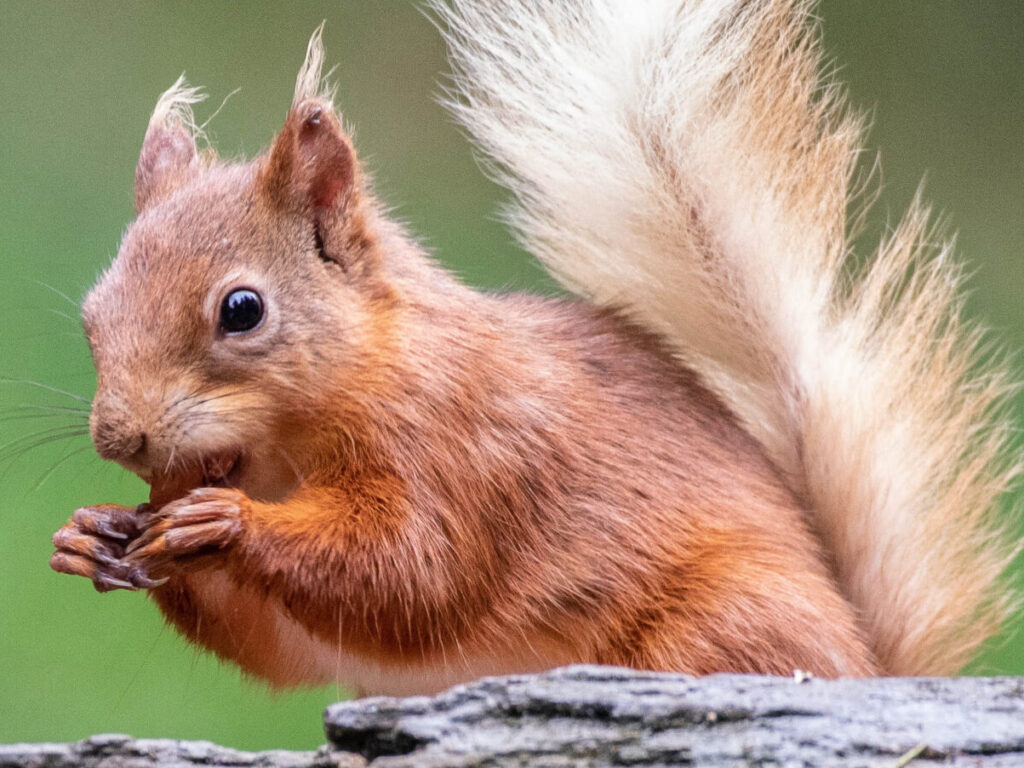
Hedgehogs
Hedgehogs have iconic brown spines and a cute waddling gate. They are famed for their sleepiness and actually spend most of their lives asleep, hibernating all through winter and only emerging at night in summer as they sleep through the day. Their numbers are in serious decline. Any hedgehog seen in the day should be a “reg flag” and its worth ringing your local sanctuary for advice.
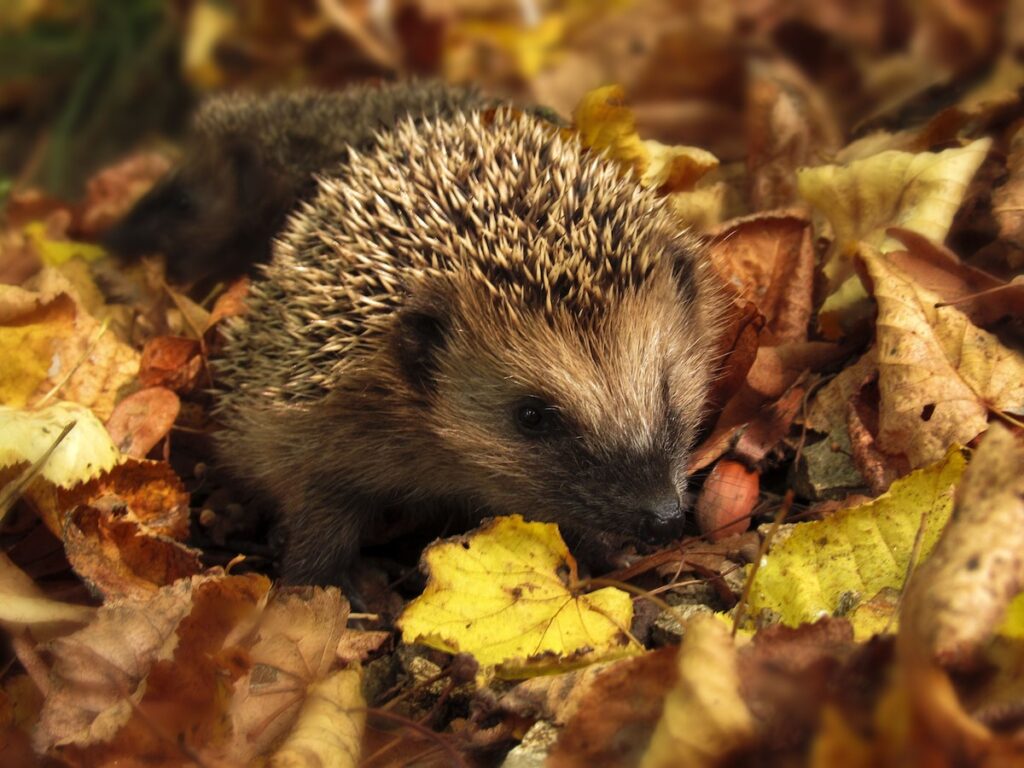
Beavers
These builders of the animal world are one of the largest rodent species. Beavers are actually herbivores, eating aquatic plants and grasses, rather than fish as most people believe. Beavers use their large teeth to fell trees and break them into smaller branches, they then use these to build a dam, creating a pool of still water that they can live in.
There are areas of the UK where beavers are being reintroduced as part of conservation projects.
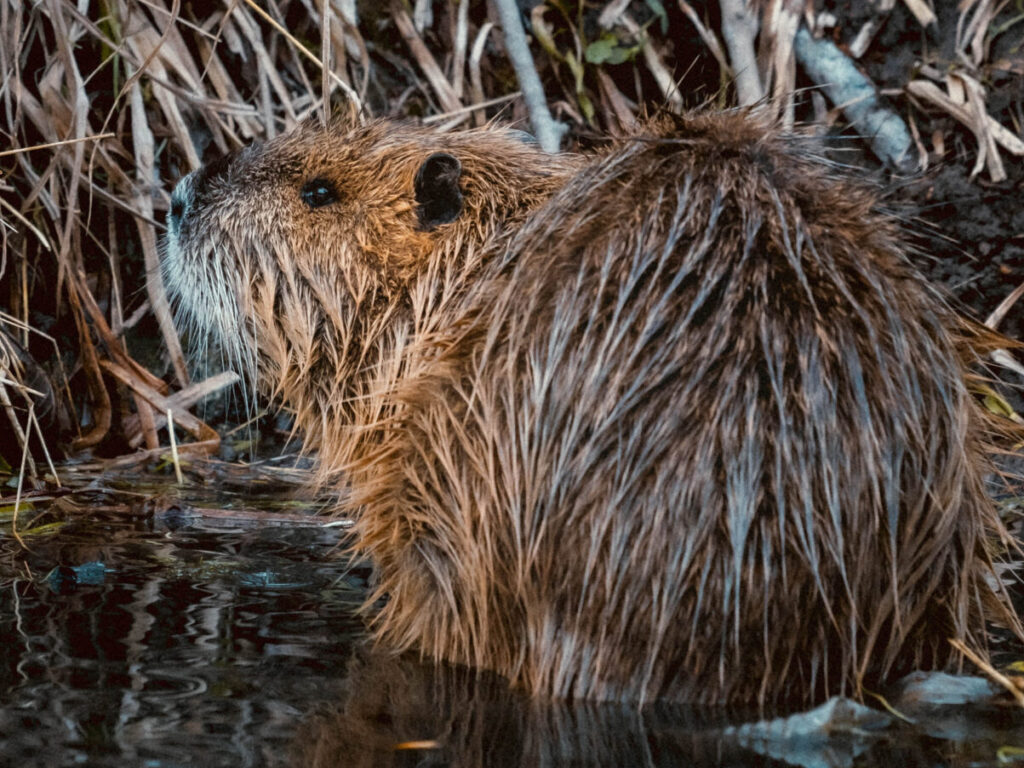
Otters
Otters live on both land and water, and are most often spotted partially submerged in rivers, canals, lakes or by the coastline. Otters are most active at night, so look out for them at dawn and dusk.

Bats
Similarly, the best time to look out for bats is at dusk. Why not try some bat watching near water as it gets dark.
You might be able to spot bats hunting on the surface of the water. You could even see a Daubenton’s bat if you can spot pale silvery undersides when the bat flies low over water.
Bats eat insects such as moths, midges, beetles and spiders.
Although many of the fascinating bat species that you can spot flitting around at night are actually in decline, if you’d like to find out what you can do to help, check out Conservation for UK Bats in our Forests.
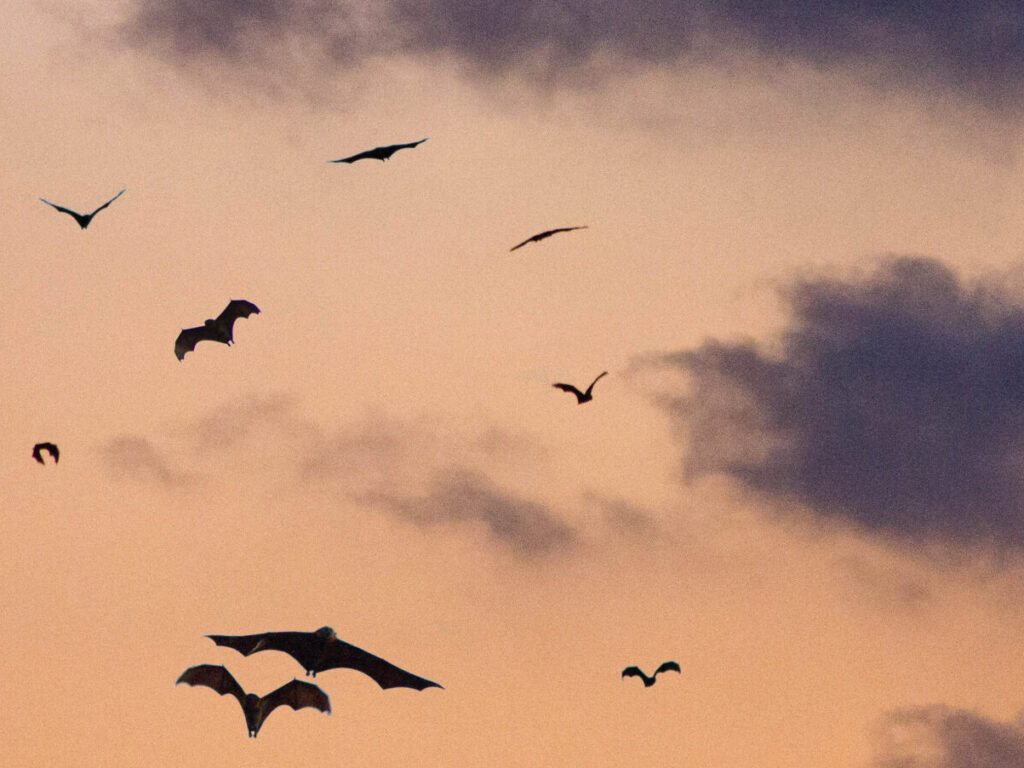
Hopefully this blog has given you an introduction to the diverse wildlife species which inhabit the UK forests.
A big tip for actually spotting some of these creatures is just to walk quietly so you don’t scare them away!
Want to know more about UK wildlife then read about UK Woodland Bird Guide or Bats In Our Forests.
As always when you’re out and about in the countryside, please remember to follow the Countryside Code – Love Your Outdoors.
Here’s me signing out and thank you so much for reading.
Lily Crooke / Environmental and Recreational author
